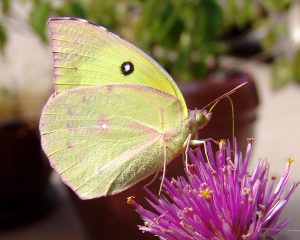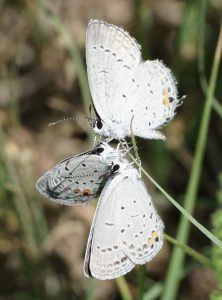Butterfly Photography: Tips and Tricks
Views: 2486

In spring and summer my social media accounts are full of butterfly pictures. Everyone with a garden wants to share shots of their beautiful visitors. Photographing butterflies is one of the few things I do pretty well, and I think I have more than one Facebook friend who hangs around just because of my own colorful pictures that I post to my wall. I’d say it’s easy, but enough people ask me how I get my shots to realize that I have a knack for butterfly photography that isn’t necessarily universal.

Using the macro setting on my old camera required me to get very close to butterflies. The results were often pictures taken at unusual angles, with tremendous detail because my camera was almost touching them.
My spouse calls me the “butterfly whisperer” because I have an ability to get very close to butterflies without scaring them away. My tricks were learned of necessity: I had a point-and-shoot camera without much of a zoom lens. What it did have, it turns out, was an extremely good macro setting. Not one to argue with Fate, I took that macro setting and ran with it. It allowed me to get spectacular photos of flowers and butterflies, if I could get close enough to the latter to snap a picture. I could get amazing details if I got my lens right on top of them, almost touching. So, I learned to stalk butterflies.
Photography Tips
If you have a good camera with a zoom lens, the following tips probably aren’t needed. But if you enjoy macro photography, or even just want to get closer to butterflies for a better shot with any camera, here are some tips:
- Wear dull clothing. Butterflies see color very well, and if you try to sneak up on them wearing bright colors, they’re going to see you as a monstrous, weirdly-shaped flower bearing down on them. Of course they’re going to fly. I do best with blacks, browns, grays, or even dark blue, but I also wear white with some success.
- Mind your shadow. If your shadow crosses a perched or resting butterfly, chances are good it’s going to fly. When I’m taking pictures, I’m always conscious of where my shadow is, and I’ll move so it doesn’t cross whatever butterfly I’m trying to photograph. Sometimes this makes it difficult to catch the butterfly in the best light, but I know I’ll lose the shot completely if I let my shadow startle my subject.
- If you can, approach slowly. Sudden movements are likely to frighten most butterflies.
- Avoid touching whatever plant or flower the butterfly is on. If you move it, it will fly.

Wait until the butterfly is fully focused on its flower before moving closer.
Patience is Key
- Wait until the butterfly is settling in for a good drink before getting too close. You can often tell when a butterfly starts getting very focused on its flower, fruit, or mud puddle. It may poke its entire head into the flower, for example. Or maybe it flies away but repeatedly comes back to the same flower or blossom. Which brings me to the next tip…
- If a butterfly flies away, don’t chase it. Just stay in place. If it landed on a flower it seemed to like, there’s a good chance it will come back to it. Just be patient. Sometimes I’ll just go stand next to a flower or flower bed where butterflies have been nectaring, even if I scare them away at first. Typically, they’ll come back eventually. I think they may even become accustomed to me after a while, if I don’t make sudden movements.

These butterflies are engaged in courtship behavior. They weren’t paying any attention to me.
- Take advantage of other distractions. When butterflies engage in courtship or copulation, they’re paying attention to other butterflies, not you.
- Try to catch them in the morning, before it gets warm. Butterflies can’t fly until they warm their bodies to a certain temperature (82°F). If you can catch them before they warm up, they may not be able to fly away, and/or they may have their wings spread to catch the light to help warm themselves up. Similarly, they’ll open their wings more often on cool and damp days. Some of my best photos have been taken early in the morning or right after a rain.
Once you’ve stalked your butterfly successfully, focus on the eyes, and keep your lens parallel to the wings as much as possible to reduce blur. Hopefully, using these tips, you’ll be able to get closer to your butterflies, thereby improving your photos. Just don’t forget to share your shots so everyone else can enjoy them, too!
Meet Leslie Miller
Leslie Ann Miller shares 3.5 acres in rural Oklahoma with birds, butterflies and wide variety of animals. She is currently transforming her yard with plantings…
Leslie's Recent Posts

Delay Spring Garden Cleanup to Protect Native Bees and Insects






